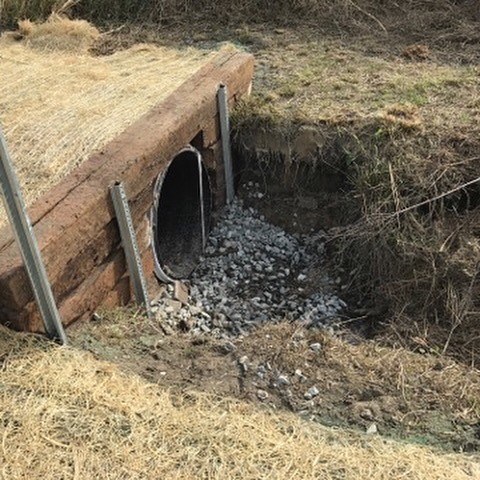Precision Pad Construction for Steady Structures
Culvert Setup Facilitated: Step-by-Step Guide for Success
Setting up culverts might look like a simple task, but ensuring an effective outcome calls for careful planning and execution. From picking the appropriate culvert dimension to integrating correct drain steps, each action in the setup procedure plays a crucial function in the performance and durability of the culvert system. By following a methodical technique and taking notice of crucial information, the setup can proceed smoothly, minimizing possible issues down the line. Stay tuned to discover the vital actions and factors to consider that can make culvert installation a smooth and successful undertaking.
Selecting the Right Culvert Size
Picking the appropriate culvert size is crucial for making sure efficient water circulation and structural stability in culvert installation projects - Pad Construction. The dimension of the culvert directly influences the flow ability of water via the framework. A culvert that is too little can result in flooding and overflow, while one that is too huge might lead to decreased water speed, potentially creating debris accumulation and obstructions
To determine the right culvert dimension, elements such as the watershed location, peak flow prices, and hydraulic efficiency requirement to be carefully taken into consideration. Estimations based on these criteria aid in selecting a size that can appropriately manage the expected water volume while lessening the threat of obstructions and structural failing.
It is vital to get in touch with design standards and criteria to guarantee that the selected culvert size meets the project demands and neighborhood laws (Pad Construction). By selecting the best culvert size, job managers can optimize water flow, stop potential issues, and boost the overall effectiveness and longevity of the culvert installation
Preparing the Setup Site
Effective culvert setup necessitates thorough prep work of the setup site to ensure optimum architectural assistance and performance. Before beginning the installment procedure, it is critical to clear the website of any type of particles, plant life, or blockages that might impede the culvert's placement. Making certain a degree foundation is essential for the appropriate alignment and stability of the culvert. This might entail rating the site to create a smooth, even surface area that can adequately support the weight of the culvert and any awaited tons. Additionally, appropriate compaction of the dirt below the culvert is essential to protect against clearing up or shifting with time.
Moreover, it is crucial to think about aspects such as dirt composition, groundwater levels, and environmental influences when preparing the setup website. Performing a comprehensive site evaluation can help determine any kind of potential challenges or dangers that may impact the culvert's efficiency. By taking the time to prepare the setup site properly, you can assist ensure a successful culvert installation that satisfies architectural needs and makes sure lasting capability.
Positioning the Culvert Appropriately

The quality at which the culvert is put is important for maintaining an appropriate incline for water flow. In addition, the culvert must be oriented correctly to make certain that the inlet and electrical outlet are in the correct locations. Pad Construction.
Backfilling and Condensing the Soil
Appropriate backfilling and compaction of the soil around the culvert Road construction is necessary to guarantee security and prevent possible concerns in the future. As soon as the culvert is correctly placed, the next crucial action is to backfill the area around it with suitable product.
Compaction assists in decreasing the possibilities of settlement and ensures consistent support around the culvert. It is essential to small the dirt evenly on all sides of the culvert to preserve its architectural integrity.
Appropriate backfilling and compaction not only give stability to the culvert however likewise help in protecting against soil disintegration and preserving the long life of the culvert system.
Guaranteeing Appropriate Water Drainage Assimilation
Incorporating effective water drainage solutions plays an essential function in the general capability and durability of culvert installments. Proper drain assimilation is essential for taking care of water circulation, avoiding disintegration, and making certain the structural stability of the culvert system. To attain this, it is vital to create a detailed water drainage plan that considers aspects such as the volume of water anticipated, the topography of the location, and the type of dirt existing.

Additionally, integrating attributes like erosion control procedures, such as riprap or plant life, can better improve the efficiency of the drainage system. By carefully intending and carrying out these drain solutions, culvert setups can function successfully and stand up to the test of time.
Verdict
Finally, proper culvert setup is crucial for maintaining reliable drain systems. By selecting the ideal culvert size, preparing the installment site, positioning the culvert properly, backfilling and compacting the dirt, and making sure proper drain integration, success can be attained. Following these steps will help make certain the durability and performance of the Get the facts culvert, eventually adding to the overall success of the drainage system.